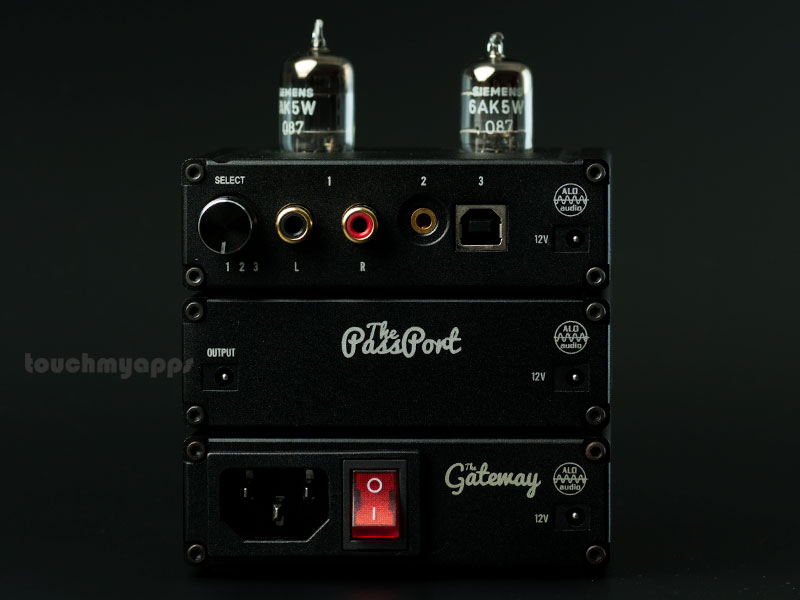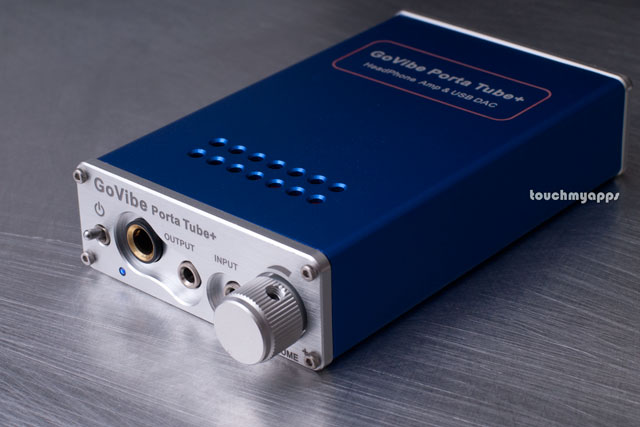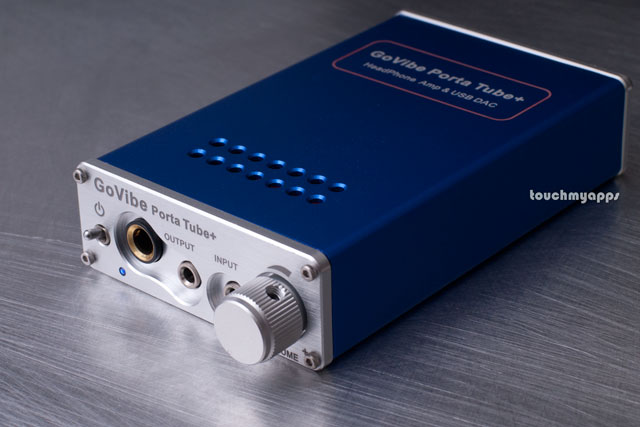Retained
-
Member Title
Freshman Member
Recent Profile Visitors
The recent visitors block is disabled and is not being shown to other users.
-
That mod sounds great. I use FitEar, Jerry Harvey, and a few other very low Ω earphones. With an output of anything over 2Ω, an external lowΩ output amp is almost necessary to retain the original sound. As I mentioned, I've only heard the AK100 for a few minutes, and not with music I'm familiar with, but every time I've heard a player with a high Ω output, I've been unimpressed with sound quality for lowΩ earphones. Some people are not bothered by the differences, however.
-
From what I understand, the AK100 doesn't have an ideal headphone output for low Ω earphones, thus you will get a deviation from the original recording. It seems a nice player, but perhaps not quite up to snuff regarding its target market: portable headphone AND earphone users. Goldenears.net rate the AK100 at 22Ω, which means that any earphone up to and maybe higher than 80Ω will probably lose at least bass response and possibly quite more.
-
I spent only a little time with the AK100 and via the FitEar ToGo! 334 and it seemed to be a well thought-out device, especially the digital volume pot. Because it increments slowly, there is very little chance you will break your eardrums from an inadvertent swipe. The short listen I had wouldn't allow me to reason out if the resolution is any good or not with low Ω balanced armature earphones which always break poor amps and players.
-

Logitech UE-6000 Noise Canceling Stereo Headphone review
shigzeo replied to dalethorn's topic in Headphones & Speakers
The 1R is HOT. I'll be using it again in a few days. I got to review the PHA-1 headphone hamplifier/DAC for the iPhone/iDevice/some Android phones/PC. That is a killer product. Their headphones, while comfortable and nice looking, are still the same old plastic stuff that Sony's put out apart from its high end offerings. Watch headfi. They'll have some more information on it. The three of us that went really enjoyed our time with the engineers. -

Logitech UE-6000 Noise Canceling Stereo Headphone review
shigzeo replied to dalethorn's topic in Headphones & Speakers
I will be going to a headphone festival next weekend, and another the weekend after. UE will be there, so I'll finally check these out. So many new releases this year. Recently, the new MDR-1 BT and NC phones from Sony hit my desk for a test drive and they were pretty good, but overall, I'm still unimpressed by the majority of NC headphones out there. -
Primarily, this forum is dedicated to dedicated PC audio hardware, but I've been finding new lease on portable amps/DAC's recently. This year, I've been pretty interested in what ALO Audio have put out for the headphone world and I hope someday, they implement their tight designs in small power amps. The spec is pretty 'about': Input: USB, 3,5mm stereo mini, analogue RCA Output: 6,3mm stereo headphone plug, 3,5mm stereo mini plug Valves: 61J compatible valves Battery run time: ~8-10 hours Compatible impedance range: 8-600Ω (but I found the best match is 50-600Ω) I live in Japan, so a power-hungry power amp and large speakers to go with my music server are right out. In fact, my current home system is none other than the compact CEntrance DACmini PX, which does a more than respectable job of pushing speakers, and is perfect with headphones. Surprisingly, the Pan Am, a mains or battery or wall wart powered amp that comes rings in at less than 800$ with all the necessary bits: battery module (Passport) and Pan Am amp, actually pushes my DT880 600Ω to much much higher levels of performance (output power) than the DACmini does. I've detailed my findings here and am interested in knowing how others are getting on with this amp. Please speak up as I am keen on finding brothers and sisters here.
- 2 replies
-
- alo
- headphone amp
-
(and 1 more)
Tagged with:
-

How Can It Be? Algorythm Solo
shigzeo replied to DiminishingReturnsOfficer's topic in DAC - Digital to Analog Conversion
This is an old thread, but I've a SOLO for use with home equipment or when out and about. I've used it via coaxial with outboard DAC's/AMPs and straight into amps as well, with single ended and balanced headphones (via the right amp). It is amazing. Current iDevices can only playback 16-bit audio, but there are a few apps that allow you to playback higher res - it's just not as easy to get going. The CLAS SOLO is amazing, surpassing the output of any iDevice or any portable for that matter via both its analogue and digital outputs. Incredible work, really. I've written up a bit more about it at TouchMyApps if you are interested. I very seriously recommend the CLAS for demanding portable and home audiophiles who want to get the best quality output signals from their iDevices. -
I find that every headphone cable is detachable. Just depends on how strong you are. It is nice to have in high end headphones, though many makers, such as Beyerdynamic, simply don't pander to the cable crowd. Some people say that cables should be detachable so they don't break. Well, I've never broken a cable apart from once with a knife. Just be careful.
-
The T15 is also tiny, perfect for working out, and comes with the same strong cable as with the ACS T1 1000 pound (monetary unit) custom earphone. There are a small number of people, me included, that swears by this earphone. It is expensive for its tech, though, so people pass it up in favour of more drivers. They are missing out heaps.
-
From what I understand, Etymotic use ACS custom silicon shells. ACS make incredible earphones, called the T15, that can be used with custom pieces as well. They are pricey at 150 pounds, but perhaps the best in class for large sound stage and beautiful treble. Flat, though they are, they are engaging with good, custom fit.
-
Another good option (great by my reckoning) is the Audio Technica ES10. It comes with a short cable, but a thin extension works well with it. It has a titanium cup, so resonance is more natural than some cheap plastics, with cleaner highs. It is also small, well-made, and very comfortable. It has been my favourite portable phone, except for the fact that its pleather isn't good for crowded trains (I live in Japan) because of sweat. It accepts very strong outputs, has reasonably flat bass-midrange response, and then slightly elevated treble in certain areas. If you know the earphone Audio Technica CK10, this is very much like a headphone version, but with stronger bass response. It does not need a headphone amp, but for use at a bedside, an amp helps keep it from flopping to the ground. It is hard to find abroad, but here in Japan, it can be found in all major headphone dealers and is always popular. The only other headphone (portable and closed) that I prefer is the Beyerdynamic T50P, but that doesn't work at all in the summer!
-
I've not posted much in these forums since joining in 2010, which I feel is my mistake. Here, audiophiles who are very serious about music congregate more than any other forum I've seen. Time to make friends. (For more details and further sound impressions, check out my original review of the Porta Tube+.) If you don't know GoVibe, it is Jaben's top-end brand, consisting of headphone amps, DAC's, and sometimes, cables. Today's review encapsulates the GoVibe Porta Tube+, a 24/96kHz USB DAC/headphone amp. 24/192kHz is achieved via upsampling. The DAC, a CIRRUS CS4398-CZZ. USB plug-play is its only stumbling block. The main feature of the Porta Tube+ is the output valve, but I would like to draw attention to the fact that the GoVibe Porta Tube/+ is more impressive in that no matter which headphones are connected, whether low Ω headphones that drive down to 4Ω during heavy bass passages, or high Ω headphones like the DT880, that act very much like no load, but require more voltage, never stray farther than 1% performance from each other. Impressive performance to say the very least. Of course, with a valve amp, there is overall more distortion than there is via a solid state amp, more phase errors, and oftentimes, a higher noise floor. The Porta Tube strikes each one of those except the last. Noise floor is extremely low even when very sensitive earphones such as the 1400$ FitEar ToGo 334 is plugged in, and equally as impressive via the Sleek Audio CT7, a dual-driver custom monitor. There is no noise via any on-ear or over-ear headphone at any volume level in low gain. High gain is the realm of headphones, not earphones. Gain modes Now I suppose I should mention: gain is changed via internal jumper switches. While archaic, it has less impact on the sound because of fewer circuit connections in the amp. But, to change from low to high and visa versa, you must unscrew each of 8 screws, push the board out, then use long-nose pliers, or be handy with a small (-) screwdriver. TMA's review goes further into that. Low gain has good balance between channels for sensitive IEM earphones, while high gain will render too much volume for them to achieve balance. High gain is great for voltage hungry headphones, but I found even low gain more than enough for my 600Ω DT880, and the 64Ω K701. No problems at all. Sound in a nutshell While this amp is driven by a valve, and it posts higher distortion numbers than a solid state amp, it is bright, energetic, and easy to love. There is none of that bloom that pervades the signal of lesser valve amps, and no congestion at all. Again, no matter which earphones/headphones you have plugged in, the Porta Tube acts very like there is nothing plugged in at all. Nothing obstructs the clarity of its signal, its rise time, and decay. That said, there is a bit of softness in the signal no matter the output device. It's a lovely cloud in both the high/low frequencies that demonstrates itself in a slight blending of L/R channels. It is perfectly 'tubey', yet perfectly coherent in every phase. The volume pot is silky smooth and balanced even at low frequencies, and unless you trip the high gain and attempt to blow your headphones at 90% volume, phase errors are nil. In other words, there is no phasing the Porta Tube/+. As a DAC, it is competent, but I've found that USB battery powered DAC's perform less well as DACs than they do as line-input devices. The iPod touch drives signal better from its line out better than the USB-DAC does. If you up the quality of the input, say, to a AlgoRythm Solo, a CD player, or good pre-amp, it only gets better. But, the final output will remain within CD-quality benchmarks. Whatever you think about that is whatever you think. I'm incredibly impressed. Admittedly, my experience with valve has stayed 100% in the living room with power amps, headphone amps, and one or two DACs (how does that work?), but I'm confident in saying that from a performance and sound perspective, the Porta Tube+ is one of the greats in this field, certainly at its price. For more details and further sound impressions, check out my original review of the Porta Tube+.
-
- headphone amp
- review
-
(and 1 more)
Tagged with:
-

Best possible battery powered headphone amp?
shigzeo replied to chrille's topic in Headphones & Speakers
I must recommend the GoVibe Porta Tube+. It is perfect for HD series as it gives enough voltage and resolution to them, but if you want to trim up your USB/DAC or headphone rig, it loses no resolution to harder to drive, lowΩ earphones such as Earsonics SM2, either. Quite a feat. It is expensive, though, and at about 700$, doesn't come nicely festooned. If you're going for the best and especially if you consider valve amps a plus, then I give two big thumbs up to the GoVibe Porta Tube+. I've just finished a review of it here. -

iPad + Camera Connection Kit & IOS4.2 goes Asynchronous
shigzeo replied to Wavelength's topic in General Forum
Unfortunately, it DOESN'T work! I've tried several times with updated devices in hopes that it would work, but it doesn't.




